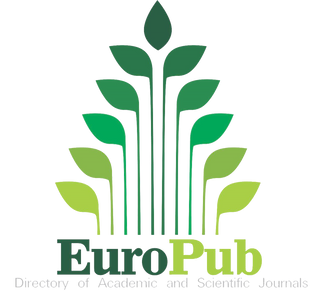Ukupni fenoli, antioksidativna i antimikrobna aktivnost metanolnih ekstrakata bobica Symphoricarpos albus (L.) S.F.Blake, S. × chenaultii Rehder i S. orbiculatus Moench
DOI:
https://doi.org/10.54652/rsf.2018.v48.i1.53Ključne riječi:
antibacterial, antifungal, Caprifoliaceae, phenolic compounds, snowberrySažetak
581.19:547.56]:582.971.1
Dobiveni rezultati u ovoj studiji pokazuju da istraživane svojte Symphoricarpos albus, S. × chenaultii i S. orbiculatus predstavljaju potencijalni izvor bioaktivnih jedinjenja koja još uvijek nisu dovoljno istražena. Metanolni ekstrakti bobica analiziranih svojti Symphoricarpos su relativno siromašni ukupnim fenolima flavonoidima i flavanolima, sa izuzetkom S. orbiculatus. Metanolni ekstrakti bobica S. orbiculatus sa najvišom srednjom vrijednošću ukupnih fenola, flavonoida i flavanola imaju relativno visoku antioksidativnu aktivnost, pa su neophodna detaljna istraživanja zavisnosti antioksidativne aktivnosti od drugih bioaktivnih jedinjenja. Metanolni ekstrakti plodova S. albus imaju umjerenu antibakterijsku aktivnost protiv pet analiziranih bakterijskih sojeva (Bacillus vulgatus, Enterococcus faecalis, Pseudomonas aeruginosa, Salmonella abony i Staphylococcus aureus), S. × chenaultii samo protiv tri soja (B. vulgatus, P. aeruginosa i S. aureus). Iako je S. orbiculatus imao najveću antioksidativnu aktivnost, on nije pokazao nikakvu antimikrobnu aktivnost. Ovim istraživanjem nije dokazana antifungalna aktivnost metanolnih ekstrakata plodova istraživanih svojti Symphoricarpos protiv C. albicans.
Downloads
References
ALO MN, ANYIM C, IGWE JC, ELOM M, UCHENNA DS. (2012): Antibacterial activity of water, ethanol and methanol extracts of Ocimum gratissimum, Vernonia amygdalina and Aframomum melegueta. Pelagia Research Library. Advances in Applied Science Research 3(2): 844-848.
BABA SA, MALIK SA. (2015): Determination of total phenolic and flavonoid content, antimicrobial and antioxidant activity of a root extract of Arisaema jacquemontii Blume. Journal of Taibah University for Science 9: 449-454.
BAUER AW, KIRBY WMM, SHERRIS JC, TURCK M. (1966): Antibiotic susceptibility testing by a standardized single disk method. American Journal of Clinical Pathology 36: 493-496.
BORCHARDT JR, WYSE DL, SHEAFFER CC, KAUPPI KL, FULCHER RG, EHLKE NJ, BIESBOER DD, BEY RF. (2008): Antioxidant and antimicrobial activity of seed from plants of the Mississippi river basin. Journal of Medicinal Plants Research 2(4): 081-093.
BORRÁS-LINARES I, FERNÁNDEZ-ARROYO S, ARRÁEZ-ROMAN D, PALMEROS-SUÁREZ PA, DEL VAL-DÍAZ R, ANDRADE-GONZÁLES I, FERNÁNDEZ-GUTIÉRREZ A, GÓMEZ-LEYVA JF, SEGURA-CARRETERO A. (2015): Characterization of phenolic compounds, anthocyanidin, antioxidant and antimicrobial activity of 25 varieties of Mexican Roselle (Hibiscus sabdariffa). Industrial Crops and Products 69: 385-394.
CAI Y, LUO Q, SUN M, CORKE H. (2004): Antioxidant activity and phenolic compounds of 112 traditional Chinese medicinal plants associated with anticancer. Life Sciences 74: 2157-2184.
CAKIR T, KIRDAR B, ULGEN KO. (2004): Metabolic pathway analysis of yeast strengthens the bridge between transcriptomics and metabolic networks. Biotechnology and Bioengineering 86: 251-260.
CIMMINO A, ANDOLFI A, ABOUZEID M, EVIDENTE A. (2013): Polyphenols as fungal phytotoxins, seed germination stimulants and phytoalexins. Phytochemistry Reviews 12(4): 653-672.
CROZIER A, CLIFFORD MN, ASHIHARA H. (2006): Plant secondary metabolites-Occurrence, structureand role in the human diet. Blackwell Publishing Ltd. Oxford, UK.
DINDA B, DEBNATH S, BANIK R. (2011): Naturally occurring iridoids and secoiridoids. An updated review, part 4. Chemical and Pharmaceutical Bulletin 59(7): 803-833.
DIXON RA, PAIVA NL. (1995): Stress-induced phenylpropanoid metabolism. Plant Cell 7: 1085-1097.
EVERETT TH. (1982): The New York Botanical Garden Illustrated Encyclopedia of Horticulture. Taylor & Francis, New York, USA.
FABRICANT DS, FARNSWORTH NR. (2001): The value of plants used in traditional medicine for drug discovery. Environmental Health Perspectives 109: 69-75.
GADZOVSKA S, MAURY S, DELAUNAY A, SPASENOSKI M, JOSEPH C, HAGÈGE D. (2007): Jasmonic acid elicitation of Hypericum perforatum L. cell suspensions and effects on the production of phenylpropanoids and naphtodianthrones. Plant Cell Tissue Organ Culture 89: 1-13.
GLENNIE CW. (1969): A comparative phytochemical study of Caprifoliaceae. PhD Thesis, Department of Botany, University of British Columbia, Vancouver, Canada.
HALLARD D, VAN DER HEIJDEN R, CONTIN A, JIMÉNÉZ EMT, SNOEIJER W, VERPOORTE R, JENSEN SR, CARDOSO MIL, PASQUALI G, MEMELINK J, HOGE JHC. (1998): An assay for secologanin in plant tissues based on enzymatic conversion into strictosidine. Phytochemical analysis 9: 162-167.
HESSAYON DG. (1994): The Flowering Shrub Expert. Transworld Publishers, London, UK.
JABERIAN H, PIRI K, NAZARI J. (2013): Phytochemical composition and in vitro antimicrobial and antioxidant activities of some medicinal plants. Food Chemistry 136: 237-244.
JACOBS B, LENS F, SMETS E. (2009): Evolution of fruit and seed characters in the Diervilla and Lonicera clades (Caprifoliaceae, Dipsacales). Annals of Botany 104: 253-276.
JONES GN. (1940): A monograph of the genus Symphoricarpos. Journal of the Arnold Arboretum 21(2): 201-252.
JURIKOVA T, ROP O, MLCEK J, SOCHOR J, BALLA S, SZEKERES L, HEGEDUSOVA A, HUBALEK J, ADAM V, KIZEK R. (2012): Phenolic profile of edible honeysuckle berries(Genus Lonicera) and their biological effects. Molecules 17: 61-79.
KÄHKÖNEN MP, HOPIA AI, VUORELA HJ, RAUHA JP, PIHLAJA K, KUJALA TS, HEINONEN M. (1999): Antioxidant activity of plant extracts containing phenolic compounds. Journal of Agriculture and Food Chemistry 47: 3954-3962.
KIM HK, CHOI YH, TEUS LUIJENDIJK JC, VERA ROCHA RA, VERPOORTE R. (2004): Comparison of extraction methods for secologanin and the quantitative analysis of secologanin from Symphoricarpos albus using 1H-NMR. Phytochemical Analysis 15: 257-261.
KOVALENKO SM, GUBIN UI, GUSAROVA TD. (2007): Isolation of the iridoids Symphoricarpos albus. Fitoterapija 2: 65-68.
LANS C, TURNER N, KHAN T, BRAUER G. (2007): Ethnoveterinary medicines used to treat endoparasites and stomach problems in pigs and pets in British Columbia, Canada. Veterinary Parasitology 148: 325-340.
LATTANZIO V. (2013): Natural Products. U: Ramawat KG, Mérillon JM. (Eds.), Phenolic compounds: Introduction. Springer-Verlag Berlin Heidelberg, Germany. pp. 1543-1580.
LIMA-FILHO JV, CORDEIRO RA. (2014): In vitro and in vivo antibacterial and antifungal screening of natural plant products: prospective standardization of basic methods. U: Albuquerque UP, Cruz da Cunha LVF, Lucena RFP, et al. (Eds.), Methods and Techniques in Ethnobiology and Ethnoecology, Springer Protocols Handbooks. pp. 275-291.
MAKAREVICH IF, KOVALENKO SN, GUSAROVA TD, GUBIN YU I. (2009): Iridoids from Symphoricarpos albus. Chemistry of Natural Compounds 45(1): 40-44.
MALYI VV, KHVOROST OP. (2013): Quantitative content of bas major groups in raw materials of Symphoricarpos albus (L.) Blake and Symphoricarpos occidentalis Hook. Український медичний альманах 16(1): 83-84.
MEDA A, LAMIEN CE, ROMITO M, MILLOGO J, NACOULMA OG. (2005): Determination of the total phenolic, flavonoid and proline contents in Burkina Fasan Honey, as well as their radical scavenging activity. Food Chemistry 91(3): 571-577.
MOERMAN DE. (1998): Native American Ethnobotany. Timber Press, Portland, USA.
MORRIS JA, KHETTRY A, SEITZ EW. (1979): Antimicrobial activity of aroma chemical and essential oils. Journal of the American Oil Chemists' Society 56: 595-603.
NICKELL LG. (1959): Antimicrobial activity of vascular plants. Economic Botany 13(4): 281-318.
ORDOÑEZ A, GOMEZ J, VATTUONE M, ISLA M. (2006): Antioxidant activities of Sechium edule (Jacq.) Swart extracts. Food Chemistry 97: 452-458.
OREOPOULOU V. (2003): Extraction of natural antioxidants. U: Tzia C, Liadakis G. (Eds.), Extraction optimization in food engineering, Marcel Dekker, New York, USA.
ORHAN DD, HARTEVIOGLU A, KÜPELI E, YESILADA E. (2007): In vivo anti-inflammatory and antinociceptive activity of the crude extract and fractions from Rosa canina L. fruits. Journal of Ethnopharmacology 112: 394-400.
PAGANGA G, MILLER N, RICE-EVANS CA. (1999): The polyphenolic content of fruit and vegetables and their antioxidant activities. What does a serving constitute? Free Radical Research 30: 153-162.
ROBARDS K, PRENZLER PD, TUCKER G, SWATSITANG P, GLOVER W. (1999): Phenolic compounds and their role in oxidative processes in fruits. Food Chemistry 66: 401-436.
SANCHEZ-MORENO C, LARRAURI JA, SAURA-CALIXTO F. (1999): Free radical scavenging capacity and inhibition of lipid oxidation of wines, grape juices and related polyphenolic constituents. Food Research International 32: 407-412.
SARAVANAKUMAR G, YOU DG, SON S, HAN HS, HEO R, KIM K, KWON IC, LEE JY, PARK JH. (2014): Dextran sulfate-coated superparamagnetic iron oxide nanoparticles as a contrast agent for atherosclerosis imaging. Carbohydrate Polymers 101: 1225-1233.
SEIGLER DS. (1998): Plant Secondary Metabolism. Kluwer Academic Publisher, London, UK. pp. 592.
SHAHIDI F, JANITHA PK, WANASUNDARA PD. (1992): Phenolic antioxidants. Critical Reviews in Food Science and Nutrition 32(1): 67-103.
SHARIFIFAR F, NUDEH-DEHGHN G, MIRTAJALDINI M. (2008): Major flavonoids with antioxidant activity from Teucrium polium L. Food Chemistry 112: 885-888.
SINGLETON VR, ORTHOFER R, LAMUELA-RAVENTOS RM. (1999): Analysis of total phenols and other oxidation substrates and antioxidants by means of Folin-Ciocalteu reagent. Methods in Enzymology 299: 152-178.
SMITH L. (1977): The allelopathic potential of Symphoricarpos orbiculatus in the Kansas tall grass prairie. Master thesis, Emporia State University, Division of Biological Sciences, Kansas, USA.
SPIRIDON I, BODIRLAU R, TEACA C-A. (2011): Total phenolic content and antioxidant activity of plants used in traditional Romanian herbal medicine. Central European Journal of Biology 6(3): 388-396.
SZAUFER-HAJDRYCH M, GOŚLIŃSKA O. (2004): The quantitative determination of phenolic acids and antimicrobial activity of Symphoricarpus albus (L.) Blake. Acta Poloniae Pharmaceutica 61(1): 69-74.
SZAUFER-HAJDRYCH M, ZGÓRKA G. (2003): Phenolic acids from Symphoricarpos albus (L.) Blake (Caprifoliaceae). Acta Poloniae Pharmaceutica-Drug Research 61(1): 91-95.
VERMERRIS W, NICHOLSON R. (2008): Phenolic compound biochemistry. Springer Science+Business Media B.V.
VUKIĆEVIĆ E. (1996): Dekorativna dendrologija. Šumarski fakultet, Beograd, Srbija.
WATSON R. (2014): Polyphenols in plants: Isolation, purification and extract preparation. Elsevier Inc., London, UK.
WILLUHN G,MERFORT I, MATTHEISEN UM. (1983): The occurrence of lanosterol and 24-methylenelanost-8-en-3/3-ol in leaves of Symphoricarpus albus. Phytochemistry 22(1): 137-141.
WOLFE K, WU X, LIU HR. (2003): Antioxidant activity of apple peels. Journal of Agricultural and Food Chemistry 51: 609-614.
ZHENG W, WANG SY. (2001): Antioxidant activity and phenolic compounds in selected herbs. Journal of Agriculture and Food Chemistry 49: 5165-5170.






















